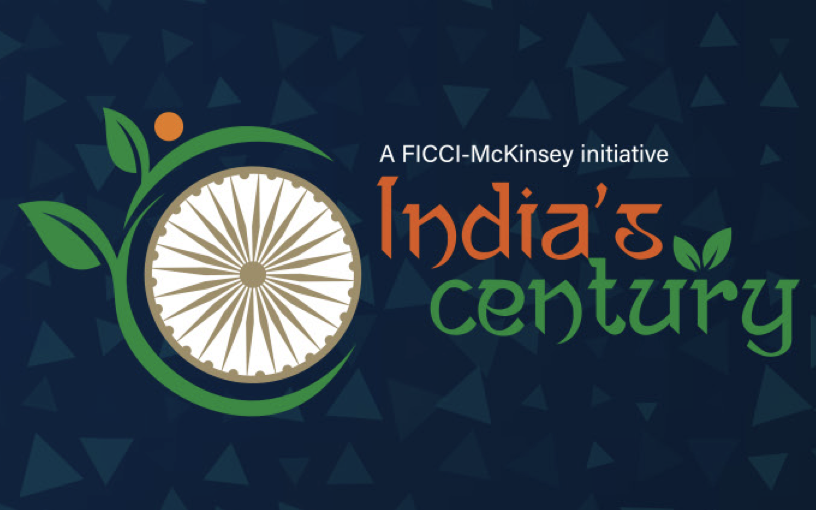India’s Century Achieving Sustainable and Inclusive Growth by FICCI-McKinsey

India’s Century Achieving Sustainable and Inclusive Growth by FICCI-McKinsey draw a roadmap for India to achieve India’ full potential by unlocking the benefits of digital transformation, energy transition and modern infrastructure development for sustainable and inclusive growth by 2047. The paper sets the roadmap to achieve ₹ 10 lack per capita income, 600 million jobs, 80-100% reduction in CO2 emission intensity, 100% access to water, 45-50% female participation in labour force and 100% pollution above poverty line by 2047 by identifying 10 sector wise priorities for India.
Action in 10 Priority sectors that could help India to achieve its growth potential
- Agriculture : Doubling export from $50 billion to $100 billion and food processing industry from $300 billion to over $600 billion through scaling of infrastructure, enhanced R&D and establishing digital export platform.
- Manufacturing : triple high value manufacturing export to $400 billion, increase manufacturing productivity by developing port proximate clusters for high growth sectors, scaling digital or scaling enabled manufacturing and positioning India as a green manufacturing capital.
- Consumer Technology : grow the number of e-retail transactors and increase the share of digital and organised market in consumer share by integrating dataset of national importance and developing digital platforms by leveraging digital India Stack, using Indian 5Gi standards to develop connectivity solutions, supplementing school curricula with technology literacy module.
- Information and Communication Technology : Increase India’s share of global software-as-a-service revenue by six times by driving an industry wide sailing and certificate mandate, attract R&D investments of leading products companies.
- Financial Services : doubling the credit penetration of micro, small and medium enterprises to 80% and remove gaps in the cost of commercial borrowing.
- Healthcare : Doubling the number of doctors, nurses and allied healthcare professional per capita, reduces disease-adjusted life years by over 30% and become a hospital to the world.
- Infrastructure and logistics : reduce the logistic costs from 14 to 8% of GDP, reduce infrastructure project cost overruns from 20% to 5% and increase skilled construction workers of total workforce.
- Energy : Doubling the share of renewables in the power generation to 40% and become the world’s cheapest producer of green hydrogen by producing five million tonnes per annum.
- Water : Grow the percentage of households with tap water connections to 100%, significantly increase the percentage of wastewater treatment from 30% to 100%.
- Education : Improve the higher-education gross enrolment ratio to 60% and student-teacher ratio to 1:15 in primary school and 1:20 in higher grades.
To achieve these objectiveS, India must strengthen four important capabilities
- Building India’s innovation muscle : by setting up nine Innovative Clusters across critical themes such as clean energy, smart mobility, new material and scaling up the Innovation Quotient as a mean to measure innovation capabilities and highlight practices needed to strengthen innovative outcomes.
- Scaling up India’s SMEs to grow 1000 mid-sized and 10000 small firms into global challengers.
- Strengthening the skills of its future workforce to match the need of high-growth sectors.
- Shaping India into the preferred destination for foreign investment by deepening capital markets with a broader set of products and services and consider entry into the Global Bond Index.

No Comment! Be the first one.